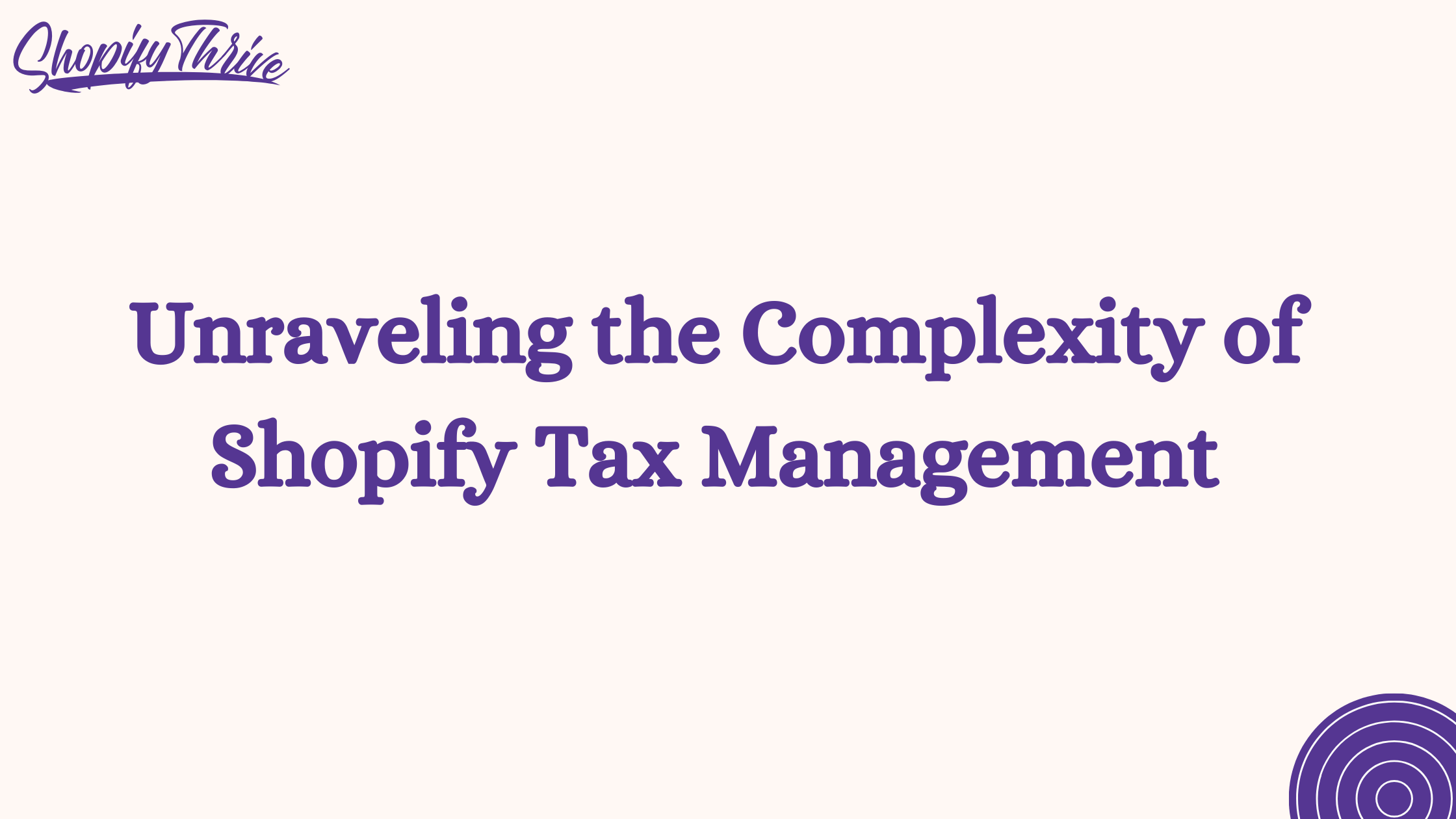
Noor
Unraveling the Complexity of Shopify Tax Management
- September 19, 2023
- , 6:00 pm
- , Shopify Tips
Introduction
Shopify Tax is an integral part of any business operation. In the e-commerce realm, they can be particularly complex due to varying tax rates, regulations, and compliance requirements across different regions. In this guide, we will demystify Shopify taxes and equip you with the knowledge needed to navigate this critical aspect of your online store.
The MECE Framework for Shopify Taxes Mastery
To provide comprehensive coverage of the topic, we’ll employ the MECE (Mutually Exclusive, Collectively Exhaustive) framework. This structured approach will break down the multifaceted subject into easily digestible sections:
1. Understanding E-commerce Taxes
Before diving into the specifics, it’s crucial to understand the fundamentals of e-commerce taxes. We’ll explore the different types of taxes, including sales tax, VAT, and GST, and their implications on your business.
2. Setting Up Taxes in Shopify
This section will guide you through the process of setting up taxes within the Shopify platform. We’ll cover essential components like tax settings, tax zones, and tax rates.
3. Tax Collection and Reporting
Collecting taxes accurately and reporting them to tax authorities is a legal requirement. We’ll discuss strategies for collecting taxes from customers and maintaining accurate records.
4. Managing Tax Exemptions
Some customers may be exempt from certain taxes. We’ll explore how to handle tax exemptions and the documentation required for exemption verification.
5. Multi-Region Tax Considerations
If your business operates in multiple regions or countries, tax complexity increases. We’ll delve into strategies for handling taxes in various jurisdictions and managing cross-border tax compliance.
6. Integration with Tax Apps
Shopify offers integration with tax calculation and reporting apps. We’ll introduce you to these tools and discuss their benefits for automating tax-related tasks.
7. Tax Audits and Compliance
Compliance with tax regulations is vital to avoid penalties and legal issues. We’ll provide insights into preparing for tax audits and maintaining compliance.
8. Tax Optimization and Cost Reduction
Efficient tax management can lead to cost savings. We’ll discuss strategies for optimizing your tax setup and reducing tax-related expenses.
Conclusion
Mastering Shopify tax is not only about compliance; it’s about optimizing your business operations and financial health. By following the steps outlined in each section of this guide, you’ll be well-equipped to handle taxes effectively within the Shopify platform.
Remember, taxes are a dynamic aspect of your e-commerce business that requires continuous monitoring and adaptation to changing tax laws and business growth. Embrace the MECE framework and start mastering Shopify taxes today. Your journey toward tax efficiency and financial success begins now!
If you enjoyed this blog post, make sure to check out some of our other useful Shopify tips here: Shopify Tips Archives | Shopify Thrive
Ready to transform and grow your shopify brand?
See why companies like Lash Artisan, Lust For Lashes, joemetry.co and more
launched their shopify Brand With ShopifyThrive.
